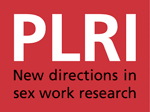HIV; entertainment workers
The risk environment framework provides a valuable but under-utilised heuristic for understanding environmental vulnerability to HIV and other sexually transmitted infections among female sex workers. Brothels have been shown to be safer than street-based sex work, with higher rates of consistent condom use and lower HIV prevalence. While entertainment venues are also assumed to be safer than street-based sex work, few studies have examined environmental influences on vulnerability to HIV in this context.

